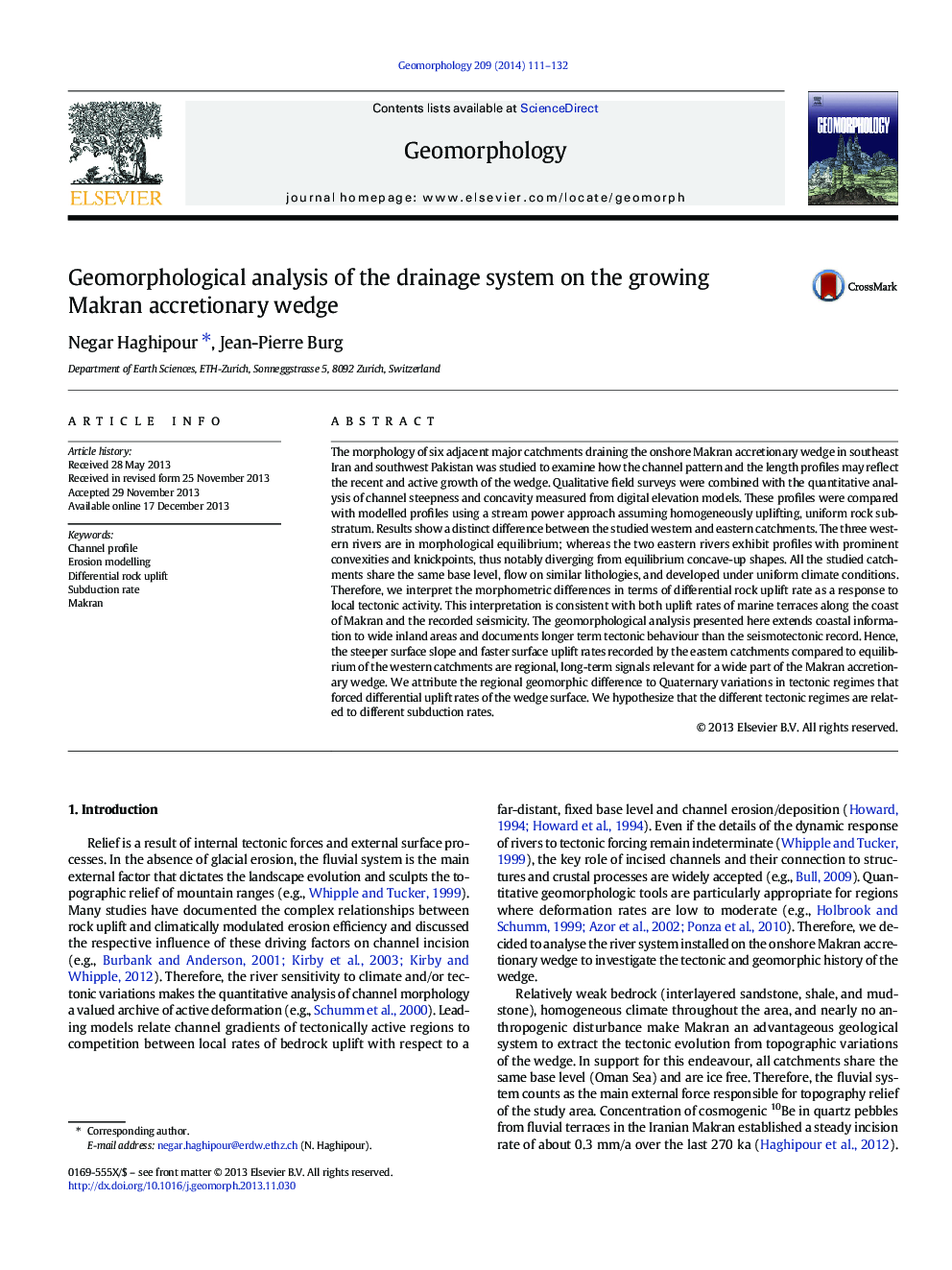| کد مقاله | کد نشریه | سال انتشار | مقاله انگلیسی | نسخه تمام متن |
|---|---|---|---|---|
| 6432611 | 1635440 | 2014 | 22 صفحه PDF | دانلود رایگان |
- Present topography and longitudinal profiles of rivers on Makran accretionary wedge
- E-W variations in geomorphic parameters
- Surface uplift expressing varying convergence rates of plates
The morphology of six adjacent major catchments draining the onshore Makran accretionary wedge in southeast Iran and southwest Pakistan was studied to examine how the channel pattern and the length profiles may reflect the recent and active growth of the wedge. Qualitative field surveys were combined with the quantitative analysis of channel steepness and concavity measured from digital elevation models. These profiles were compared with modelled profiles using a stream power approach assuming homogeneously uplifting, uniform rock substratum. Results show a distinct difference between the studied western and eastern catchments. The three western rivers are in morphological equilibrium; whereas the two eastern rivers exhibit profiles with prominent convexities and knickpoints, thus notably diverging from equilibrium concave-up shapes. All the studied catchments share the same base level, flow on similar lithologies, and developed under uniform climate conditions. Therefore, we interpret the morphometric differences in terms of differential rock uplift rate as a response to local tectonic activity. This interpretation is consistent with both uplift rates of marine terraces along the coast of Makran and the recorded seismicity. The geomorphological analysis presented here extends coastal information to wide inland areas and documents longer term tectonic behaviour than the seismotectonic record. Hence, the steeper surface slope and faster surface uplift rates recorded by the eastern catchments compared to equilibrium of the western catchments are regional, long-term signals relevant for a wide part of the Makran accretionary wedge. We attribute the regional geomorphic difference to Quaternary variations in tectonic regimes that forced differential uplift rates of the wedge surface. We hypothesize that the different tectonic regimes are related to different subduction rates.
Journal: Geomorphology - Volume 209, 15 March 2014, Pages 111-132
